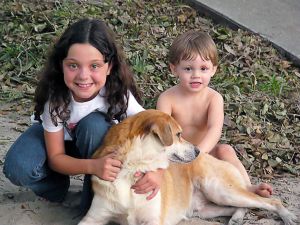 Pre-adoptive families with approved home studies are given a method to review some information about children the state is looking to place in adoptive homes. Families may review the state waiting children listings for children legally free for adoption. In many cases, approved adoptive parents are provided with a one to two page profile of children still classified as legal risk pending the termination of their birth parents rights.
Pre-adoptive families with approved home studies are given a method to review some information about children the state is looking to place in adoptive homes. Families may review the state waiting children listings for children legally free for adoption. In many cases, approved adoptive parents are provided with a one to two page profile of children still classified as legal risk pending the termination of their birth parents rights.
Potential adoptive parents decide if they are interested in being considered an adoption resource for a child or children. When hopeful adoptive families see a baby, child or sibling group who fit the vision they have for adding members to their family, they ask for their home study to be sent to the child’s caseworker for consideration.
In Some states caseworkers may have authority to make the decision independently and place children in homes they feel will be the best for the children in their caseload. Many states however, have a process called “committee” or “Staffing”. In these states, a child’s caseworker must choose three to five certified adoptive family home studies for consideration of the committee or staffing panel. When a caseworker reviews the home studies and finds a family may be a good placement the family will may receive ‘a little’ more information about the child and have the option to back out.
Once three to five families are selected by the caseworker and all of the families have had the opportunity to review the additional information a committee or staffing meeting will be scheduled.
When the families have been selected the and committee or staffing meeting set many states will allow the families to interview the current foster family, talk with doctors and therapists, and in some cases teachers or day care providers. When this is permitted it is an opportunity for the potential adoptive family to gain more insight about the child’s history and possible needs.
Many states also ask for a Family Book to be created for the purpose of giving it to the child when the decision has been made. The family book is usually a simple photo display of the home, bedroom, neighborhood, school, pets, and family members. Family books are often reviewed by the committee or staffing panel and can play a role in the family selection process.
In some cases, families going to committee or staffing may also provide a personalized one page letter or list of reasons they feel their family would be the best advocates for the baby, child or sibling groups special needs or life needs. When this is possible it is advised to take the opportunity and use it as a chance to directly address the specific needs of the child or children the family is hoping to adopt.
When the committee or staffing meeting is held there are usually three to five uninvolved caseworkers or community members serving on the selection panel. This group holds a meeting with the adoption social workers, the child’s caseworker and any other interested parties to determine which of the families would be the best placement. Generally, there is also a selection of a second family who will serve as a back up placement in the event the first family withdrawals.
When an adoptive family is selected the full disclosure file will be given to the adoptive family and a waiting period will be entered. The waiting period is designed so any non-selected family may appeal the decision. The selected adoptive family also has the opportunity to review the full file and decide if there is any reason the child has more needs then they were expecting. The waiting period also gives the caseworker an opportunity to set up a transition plan with the foster family.
It is important to find out how your state handles selection and placement. In some states the process may vary from one county to another. Most often, potential adoptive parents will learn how their state places children during training. It is a good idea to know how your state presents the children needing adoptive families and how your state selects adoptive parent placements.
|
photo by: Warren Hrycun |
This is, perhaps one of the most confusing and frustrating parts of the State Adoption process. We come to the decision to adopt children from the foster care system knowing there is great need and get to a point where it actually feels like a competition. It is a strange and stressful period of time for the potential adoptive family. This part of the process is even more difficult because outsiders and others cannot understand how adopting a waiting baby, child or sibling group could become competitive. But, this is exactly what it feels like at this point to the hopeful adoptive family.
photo credits:  (other photo no restrictions)
(other photo no restrictions)
![]() Special Needs and Adoption-Related Terms:
Special Needs and Adoption-Related Terms:
A | B | C | D | E-F | G-H-I | J-K-L | M | N-O | P | Q-R | S | T-U-V-W-X-Y-Z
For more information about parenting special needs children you might want to visit the Families.com Special Needs Blog and the Mental Health Blog. Or visit my personal website.


